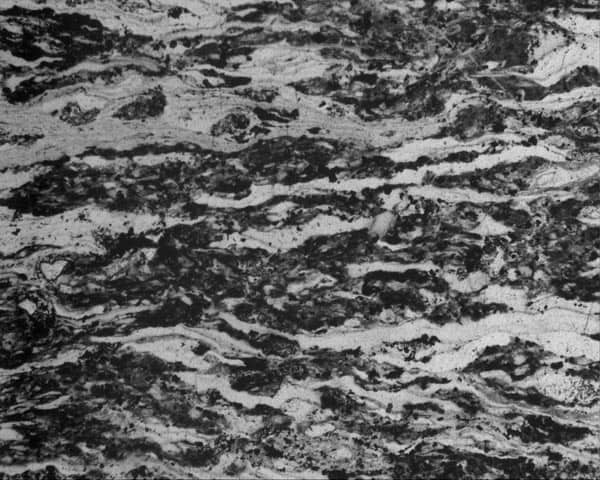
A new study of stable isotopes in ancient rocks suggests that the oceans were much cooler 3.4 billion years ago than previously thought. The discovery that the ocean could have been cooler than 40 °C was made by geophysicists in the US and could change our understanding of how life evolved after first appearing in these ancient seas.
Fossils created by mats of microbes suggest that life began on Earth more than 3.5 billion years ago in the Archaean eon, when many geologists believe that our planet was covered in an ocean that was very hot (55–80 °C). The origin of life in such a hostile environment is backed up by “universal tree of life” studies of DNA, which suggest that modern life can be traced back to “thermophilic” microbes that thrive at such temperatures.
Geophysicists have a rough idea of how hot the Archaean oceans were thanks to studies of the relative abundance of oxygen isotopes in certain rocks called “cherts”. These studies are based on the fact that cherts formed in room temperature waters, for example, contain much more oxygen-18 than cherts formed in water at 80 °C.
Unknown quantity
But to estimate the temperature of Archaean oceans we need to know the relative abundance of oxygen isotopes in Archaean seawater, which most studies to date have assumed is the same as in modern seawater. However, that may not be the case. The Earth looked very different 3.5 billion years ago compared with today – with little land and an atmosphere possibly rich in hydrogen gas – and the abundance of isotopes may have been very different.
Now Michael Hren at the University of Michigan, Mike Tice of Texas A&M University and Page Chamberlain at Stanford University have devised a new way of working out Archaean temperatures – without having to make any assumptions about Archaean seawater.
Their technique is based on the fact that cherts also contain small amounts of deuterium, the abundance of which the team measured along with oxygen-18. It turns out that the abundance of oxygen-18 drops dramatically if the chert is formed at temperatures greater than about 55 °C, whereas the deuterium abundance remains relatively stable.
Lower upper limit
The team examined the deuterium and oxygen-18 abundances for about 25 chert samples from South Africa known to be about 3.42 billion years old. From their data they were able to constrain the ancient ocean composition and put an upper limit on ocean temperatures of about 40 °C.
The result suggests that Archaean life could have existed in a wider diversity of environments than previously thought. For example, life could have first emerged as thermopiles in hot water near to hydrothermal vents, but then ventured further away into cooler water, adapting to conditions there. “A cooler ocean would mean that life could be more diverse,” explained Hren.
Commenting on the research, astrobiologist Malcolm Walter of the University of New South Wales told physicsworld.com that “one of the big issues in speculation about the origin of life is whether the ancient oceans were hot”. Walter also pointed out that “there have long been doubts that…the oxygen isotopic composition has been constant” – a problem that he said is compounded by the fact there are very few known examples of Achaean cherts that can be studied.
Walter described the work of Hren and colleagues as “innovative”, but added that he will treat the results with “caution” until he could gauge the response of the wider geological community.
In the meantime, Hren and colleagues will repeat their measurements on other cherts that have been subject to different aging processes.



